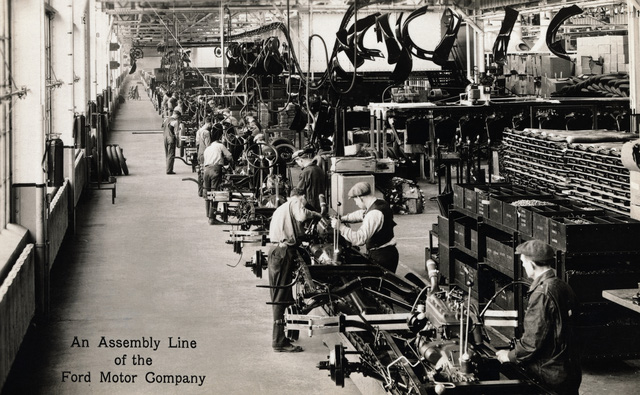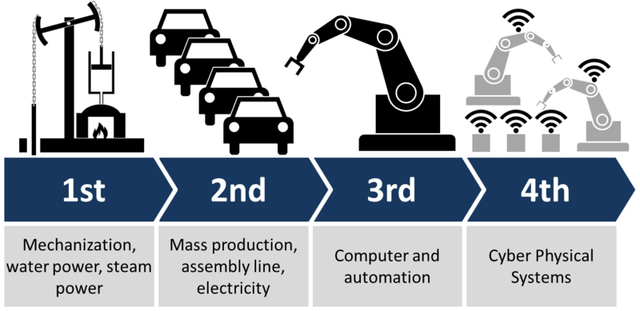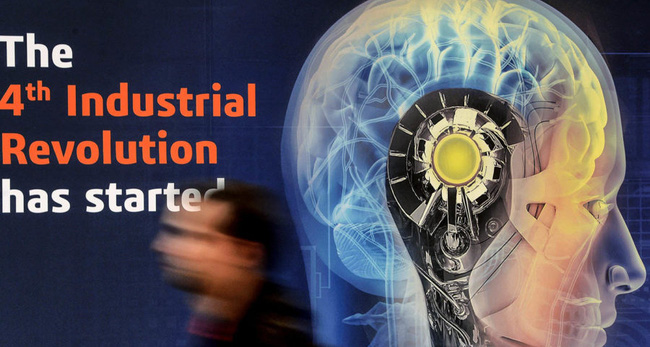Today, many countries are heading to the 4th industrial revolution as a driving force to boost manufacturing. Even countries famous for cheap labor like China are also aiming for a new scientific and technical revolution to create a driving force for production and economic development.
In fact, the industrial revolution is a comprehensive change in the manufacturing sector, from economic, cultural and social conditions to technology. The first revolution began in Britain in the late 18th century with the advent of steam engines to meet the demands of textile at the time. Then metallurgical techniques improved, the demand for coal for steam engines increased, leading to a comprehensive economic, technical and cultural change.
A series of rail systems were built, people could travel farther and better communicate with the telegraph system. Agriculture was also thriving thanks to research on cultivation and biology. People 's lives were increasingly improved, the population grew fast and the UK and Western Europe began to gain dominance globally.
Immediately after the first industrial revolution, the second revolution continued thereafter from the second half of the 19th century thanks to oil and internal combustion engines. During this period, electricity was used more and the technology was highly developed. Telephone, television, radio have completely changed social culture. Meanwhile, the manufacturing sector also changed quickly with a series of production lines, quality standards, and automation.

An Assembly Line of Ford Motor Company
During this period, the trend of urbanization began to increase rapidly, causing certain consequences in society. In rural areas, the development of chemical fertilizers, biological and agricultural studies boosted productivity. Rapid increase in industrial output such as metal and rubber boosted many economic sectors.
Thanks to this second industrial revolution, the world enjoyed modern living standards and unprecedented quality while its population grew fast. America and Western European countries in this period were the leading countries.
Despite much controversy, the 3rd industrial revolutions were supposed to begin around 1969 when many electronic, digital and computer infrastructure developed. In the 1960s, semiconductors and supercomputers were built, and in the 70-80s personal computers were born and the Internet began to become well known in the 1990s.
By the end of the 20th century, the Internet and billions of high-tech devices and many new inventions were widely used in society, thereby completing the 3rd industrial revolution.
By the time of the 21st century, a controversy continued in the process of transferring between the 3rd and 4th revolution.

Is the world going to the 4th industrial revolution?
Some experts believe that the 3rd industrial revolution ended when the Asian financial crisis broke out in 1997 and the fourth wave took place from the beginning of the 21st century with digital revolutions, new technologies such as artificial intelligence (AI), high-speed automatic connection (Internet of Thing), nanotechnology, biology, new materials, new energy ...
However, others argue that early in the 21st century, the fourth revolution is conceived and the third revolution is still not completely over. The fourth wave only really starts from around 2010 when outstanding scientific advances allow people to reach out into space. Many experts even consider the 4th industrial revolution as the revolutionary industrial science revolution when people can discover, exploit and live extraterrestrial.
Although it is unclear what expert's point of view is correct, it is clear that the current world industry is making remarkable changes compared to the 1960s. The process of automation, using robots or other Smart factories are increasingly being chosen by many companies to save costs and improve productivity.
According to McKinsey, smart factories can contribute about $ 2.3 trillion to the global economy by 2025. Meanwhile, MarketsandMarkets's research shows the total market value of the Internet of things industry has reached 94 billion USD in 2014 and will increase to 151 billion USD by 2020.
In addition, artificial intelligence systems gradually replace people in many manufacturing operations; newly invented materials improve products and living standards. New energy inventions help further promote clean energy, reduce dependence on oil as well as traditional power production.
Particularly in the agricultural sector, countries today are encouraging the use of high technology with genetic modification techniques, water distribution, soil nutrient regulation to improve productivity.
Even the transportation sector, such as automobile manufacturing, is changing rapidly in technology today. In addition to applications such as Uber that make the traditional taxi industry wobble, the Tesla's automated driving system and artificial intelligence makes the entire car industry reconsider the future development strategy.

It can be said, whether the world is undergoing the 4th industrial revolution or just conceiving it, the global industry has also made great strides with a remarkable change in production conditions compared to the 1960s, when the 3rd revolution began.
Source: CafeBiz